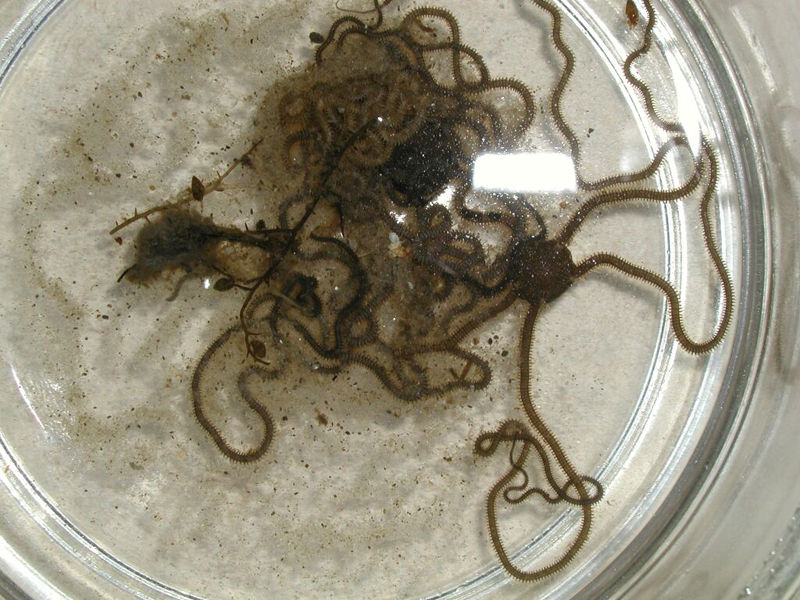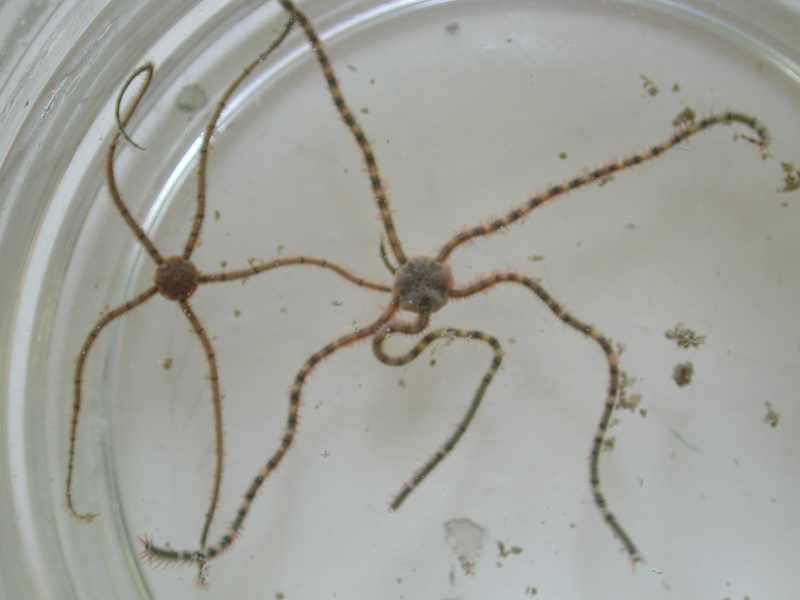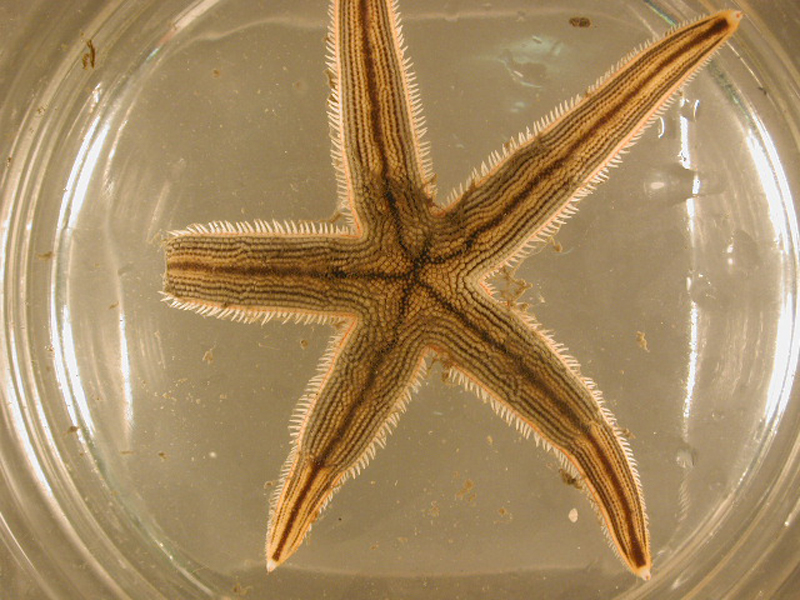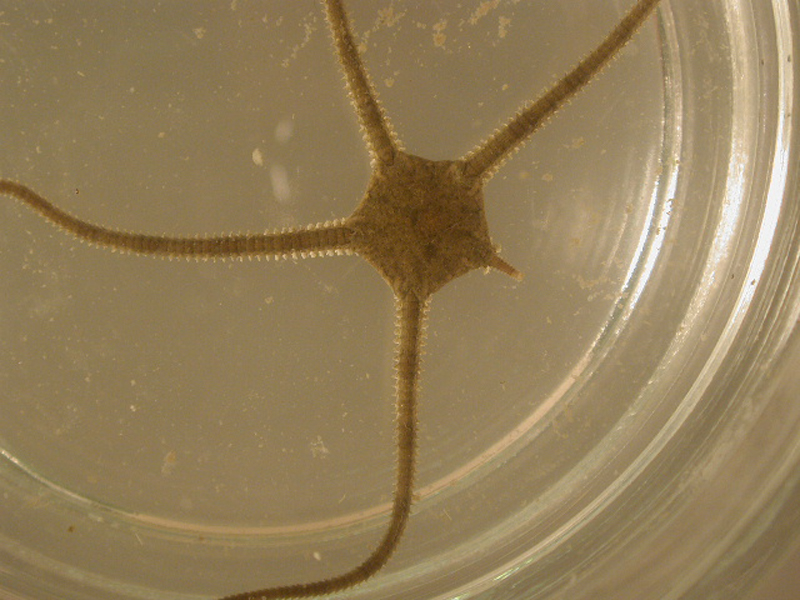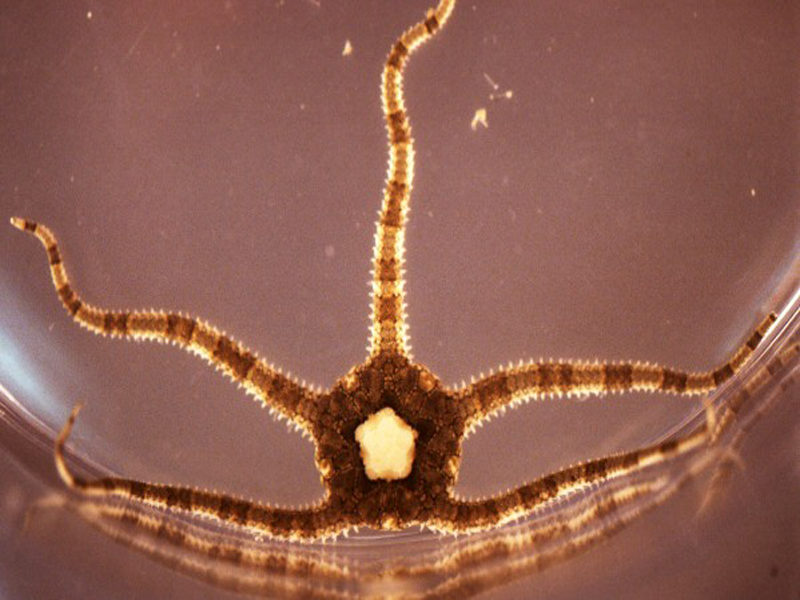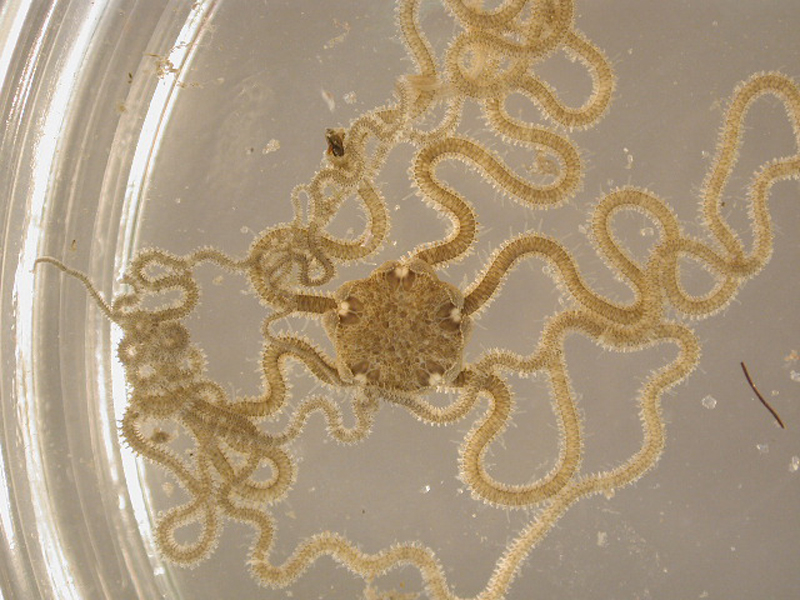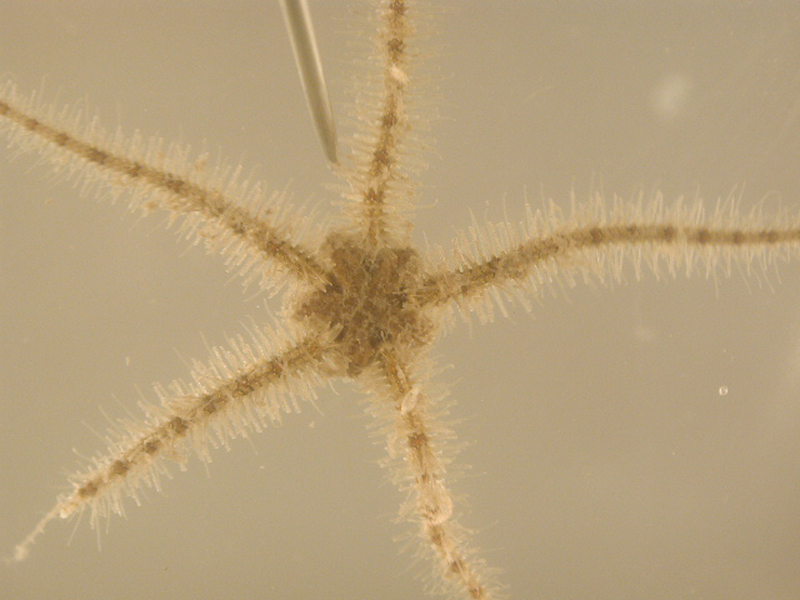Starfish-like
Mud Brittle Star
Description
Mud brittle stars are burrowing brittle stars that occur occasionally on the west coast of Florida in soft mud. The central disk reaches ½ inch in diameter and the arm length is more than 10 times the central disk diameter, up to 5 inches. At each arm joint, there are 3 to 4 short spines on each side of the arm. The arms of brittle stars contain neither digestive nor reproductive organs, thus their loss is relatively inconsequential. Once an arm is broken off, regeneration is easily and quickly accomplished.
What Are The Effects On Clams?
Mud brittle stars may be deposit or filter feeders. When filter feeding, 2 to 3 arms are held upright in the water while the disk and other arms are buried in the sediment. Mud brittle stars can also be deposit feeders, consuming sediment and extracting the organic material. As deposit feeders, they remove and recycle clam fecal materials from the culture bags. In addition, their burrowing activities help aerate the sediments.
- FRIEND
What Can A Clam Farmer Do?
As primarily non-competing deposit feeders, mud brittle stars can be left in culture bags.
Blood Brittle Star
Description
Blood brittle stars burrow in oxygen-poor sediments. They are filter-feeders and wave their arms in the water to ventilate their burrows. This species has hemoglobin blood which causes the tube feet to appear red.
What Are The Effects On Clams?
Blood brittle stars are filter feeders and, therefore, compete with clams for food.
- FOE
- Competitor
What Can A Clam Farmer Do?
Blood brittle stars are infrequently found in clam bags and rarely pose a problem.
Grey Sea Star, Armoured Sea Star
Description
Grey sea stars are abundant on sandy bottoms in shallow waters. They are bluish gray on top with a dark blue-gray stripe running the length of each arm and the underside is whitish. They burrow into the sand with their tube feet, in search of food. The tube feet lack suckers and, instead, have rounded or pointed tips. Grey sea stars are fast, reaching speeds of 30 inches per minute.
What Are The Effects On Clams?
Grey sea stars consume brittle stars. However, given the opportunity, they may consume small clams, eating them whole.
- FOE
- Competitor
What Can A Clam Farmer Do?
Clams buried in bottom bags are protected from possible predation by grey sea stars. They are found infrequently on clam leases.
Smooth Brittle Star
Description
Smooth brittle stars occur commonly in grass beds. They are usually olive green, but color may vary and the arms may be banded. The spines lie flat against the arm, giving it a sleek shape. The smooth brittle star can measure up to 3 inches in diameter.
What Are The Effects On Clams?
As an omnivore (an animal which eats both plant and animal material), smooth brittle stars will consume clam wastes, dead clams and other small organisms. Thus, they may help to keep the clam bags clean and free of fouling organisms.
- FRIEND
What Can A Clam Farmer Do?
As primarily non-competing omnivores, smooth brittle stars can be left in culture bags.
Elegant Brittle Star
Description
Elegant brittle stars prefer flat sandy mud habitats. The upper side of the disk is completely covered with plates and scales, forming a flower-like rosette in the center. Color is greenish gray to brown, and the arms may be banded. They reach a diameter of 3 inches.
What Are The Effects On Clams?
As an omnivore (an animal which eats both plant and animal material), elegant brittle stars will consume clam wastes and other small particles. Thus, they may help to keep the clam bags clean and free of fouling organisms.
- FRIEND
What Can A Clam Farmer Do?
As primarily non-competing omnivores, elegant brittle stars can be left in culture bags.
Burrowing Brittle Star
Description
Burrowing brittle stars burrow in fine sand or mud. They have very long, thin arms and reach 16 inches in diameter. The disk is gray and the arms are indistinctly banded.
What Are The Effects On Clams?
Burrowing brittle stars are filter feeders and, therefore, compete with clams for food.
- FOE
- Competitor
What Can A Clam Farmer Do?
Burrowing brittle stars are infrequently found in clam bags and rarely pose a problem.
Spiny Brittle Star
Description
Spiny brittle stars are common and are often associated with fouling organisms such as tunicates, bryozoans and sponges. They are colorful and may be green, grey, red or orange. Spines on the arms are long and glassy. Spiny brittle stars reach a diameter of 2½ inches.
What Are The Effects On Clams?
Spiny brittle stars are filter feeders and, therefore, compete with clams for food.
- FOE
- Competitor
What Can A Clam Farmer Do?
Spiny brittle stars live among other fouling organisms on clam culture bags. Therefore, removal of other fouling species should reduce their numbers.
